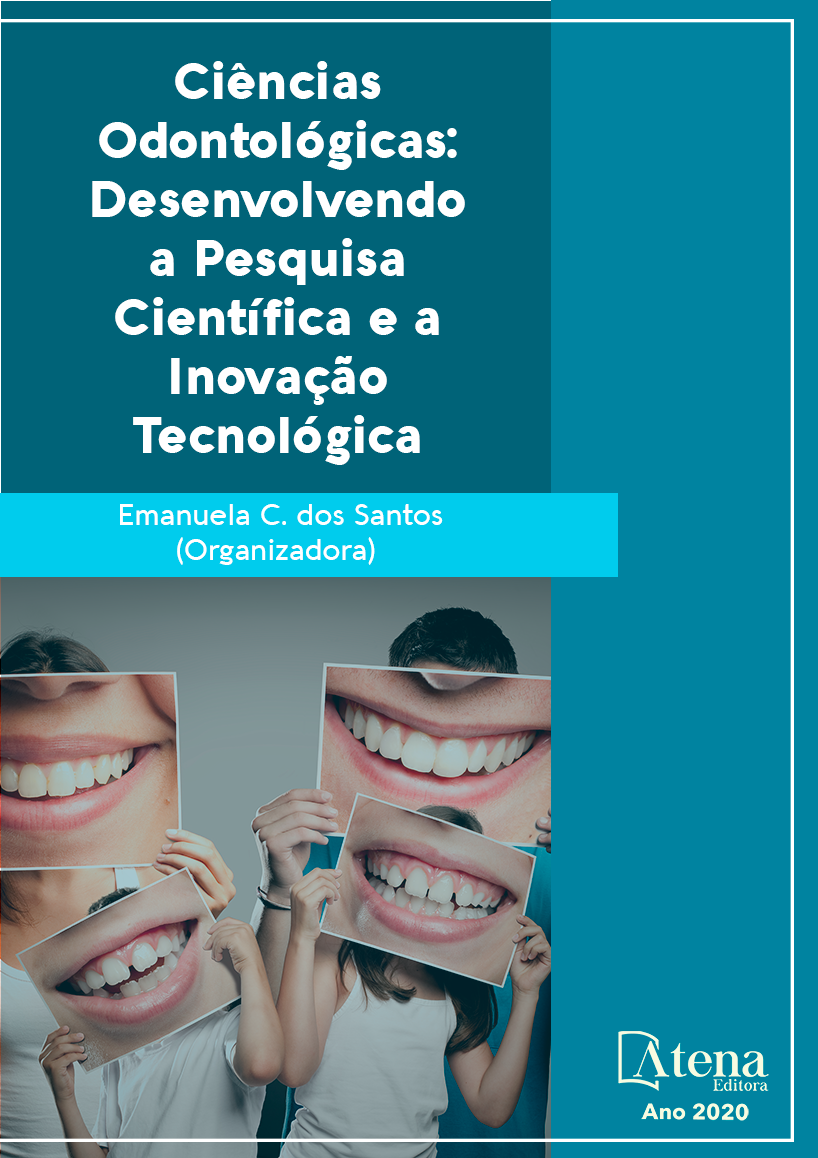
COMPARISON OF AN EXPERIMENTAL DENTIFRICE BASED AS RICINUS COMMUNIS WITH COMMERCIAL DENTIFRICE FOR BIOFILM REMOVAL.
Dentifrícios com atividade antimicrobiana podem facilitar as etapas de higiene e melhorar a adesão do paciente no cuidado diário. Este estudo avaliou um dentifrício experimental (Ricinus communis a 10%) e o comparou com dentifrícios comerciais. As variáveis de resposta foram: características organolépticas e físico-químicas; abrasividade e rugosidade antes (T0) e após (Tf) escovação artificial; atividade antimicrobiana contra biofilme simples de bactérias e leveduras. Para os testes organolépticos e físico-químicos, foram utilizadas análises descritivas. Os dados de abrasividade e ação antimicrobiana foram submetidos aos testes ANOVA e Tukey (p = 0,05). O dentifrício experimental apresentou ótimo aspecto, odor e sabor e apresentou menor densidade, consistência e viscosidade quando comparado aos dentifrícios comerciais. Todos eles apresentaram pH alcalino. Os dentifrícios experimentais (17,325 ± 2,302) e Colgate (16,573 ± 3,282) promoveram maior rugosidade em comparação com DentuCreme (9,775 ± 1,661) e Trihydral (7,089 ± 3,980). O dentifrício experimental (43 ± 3,2) induziu perda de massa (mg) semelhante ao DentuCream (44 ± 1,8) e Trihydral (40,3 ± 2,2). O dentifrício Colgate (53,1 ± 6,6) promoveu maior perda de massa. A ação antimicrobiana dos dentifrícios apresentou diferença significativa entre eles, destacando-se: para Enterococcus faecalis: Experimental (3,66 ± 0,56), Colgate (3,82 ± 0,83), DentuCreme (2,84 ± 0,81) e Trihydral (3,13 ± 0,46); Candida glabrata: Experimental (3,96 ± 0,54), Colgate (3,84 ± 0,49) e Tri-hidral (3,35 ± 0,59) foram semelhantes; Staphylococcus aureus: Experimental (4,99 ± 0,53), Colgate (4,78 ± 0,72) e controle (4,86 ± 0,43) foram semelhantes; Candida albicans: Experimental (3,98 ± 0,57), Colgate (3,76 ± 0,78), DentuCreme (3,23 ± 0,23) e água (3,41 ± 0,66) foram semelhantes. Conclusões: O dentifrício experimental pode ser implementado no atendimento diário de rotina para o controle de biofilmes para estruturas dentárias, próteses e mucosas, apresentando uma característica organoléptica e físico-química estável e atividade antimicrobiana satisfatória.
COMPARISON OF AN EXPERIMENTAL DENTIFRICE BASED AS RICINUS COMMUNIS WITH COMMERCIAL DENTIFRICE FOR BIOFILM REMOVAL.
-
DOI: 10.22533/at.ed.2682025066
-
Palavras-chave: Próteses totais, Óleo de mamona, Dentifrícios, Micorbiologia
-
Keywords: Complete denture; Dentifrices; Castor Bean; Microbiology
-
Abstract:
Dentifrices with antimicrobial activity may facilitate hygiene steps and better patient compliance in daily care. This study evaluated an experimental dentifrice (Ricinus communis at 10%) and compared it with commercial dentifrices. The response variables were: organoleptic and physical-chemical characteristics; abrasiveness and roughness before (T0) and after (Tf) artificial brushing; antimicrobial activity against simple biofilm of bacteria and yeast. For organoleptic and physical-chemical testing, descriptive analyzes were used. The data of abrasiveness and antimicrobial action were submitted to ANOVA and Tukey test (p=0.05). The experimental dentifrice presented great aspect, odor and taste and showed the lowest density, consistency and viscosity when compared to commercial dentifrices. All of them showed alkaline pH. Experimental (17.325±2.302) and Colgate dentifrices (16.573±3.282) promoted greater roughness compared to DentuCreme (9.775±1.661) and Trihydral (7.089±3.980). The experimental dentifrice (43±3.2) induced mass loss (mg) similar to DentuCream (44±1.8) and Trihydral (40.3±2.2). The Colgate dentifrice (53.1±6.6) promoted greater mass loss. The antimicrobial action of the dentifrices was significant difference between them, highlighting: to Enterococcus faecalis: Experimental (3.66±0.56), Colgate (3.82±0.83), DentuCreme (2.84±0.81) and Trihydral (3.13±0.46) were similar; Candida glabrata: Experimental (3.96±0.54), Colgate (3.84±0.49) and Trihydral (3.35±0.59 ) were similar; Staphylococcus aureus: Experimental (4.99±0.53), Colgate (4.78±0.72) and control (4.86±0.43) were similar; Candida albicans: Experimental (3.98±0.57), Colgate (3.76±0.78), DentuCreme (3.23±0.23) and water (3.41±0.66) were similar. Conclusions: The experimental dentifrice can be implemented in routine daily care for biofilm control for dental, prostheses and mucosal structures, with presents a stable organoleptic and physic-chemical characteristic, and satisfactory antimicrobial activity.
-
Número de páginas: 17
- Vanessa Maria Fagundes Leite-Fernandes
- Adriana Barbosa Ribeiro
- Maurício Malheiros Badaró
- Viviane de Cássia Oliveira
- Helena de Freitas Oliveira Paranhos
- CLAUDIA HELENA LOVATO DA SILVA


